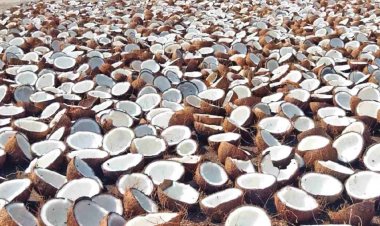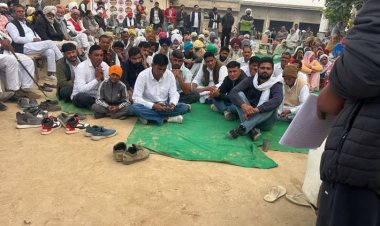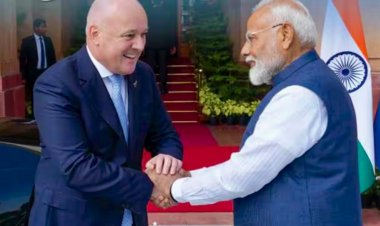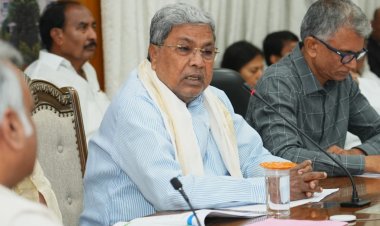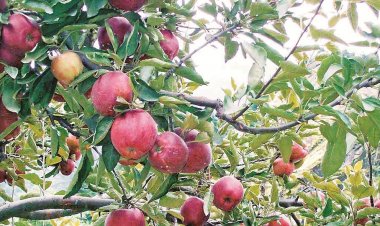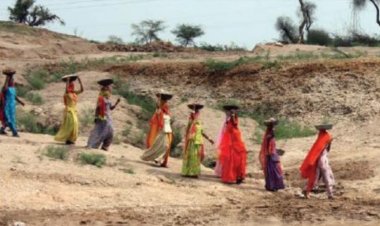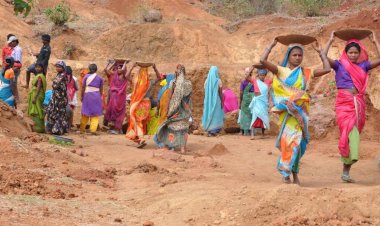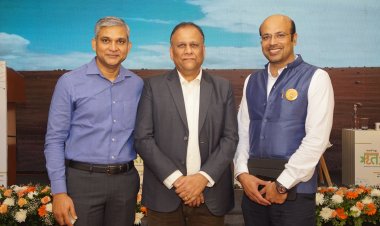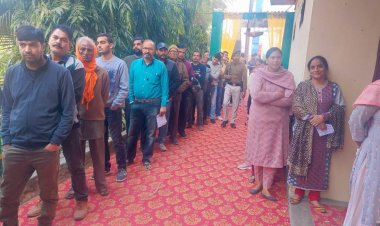How justified is it to call a draft report the opinion of Punjab government?
The committee report prepared to bring about reforms in the economy of Punjab is yet to be finalised. The government is yet to accept its recommendations. Terming this report as state government policy is merely an attempt to cause a ruckus.
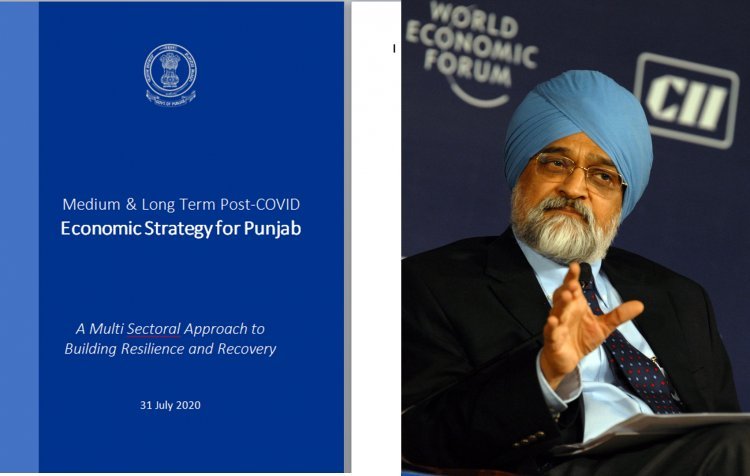
A draft report of the Punjab government is a fresh example of a storm in a teacup and how the media flies with it. It has been prepared by a committee headed by Montek Singh Ahluwalia, former Vice-Chairman of the Planning Commission. The draft report had been submitted to the government on July 31, 2020. The report was to be given a final shape by December 2020 depending upon the standpoint of the Punjab government. It is still only in a draft form and yet to be finalized. But it has generated controversy. It is being reported that the committee of the Punjab government has recommended agricultural reforms similar to those desired to be brought about by the Modi government through the farm laws.
RuralVoice has accessed a copy of the report. The 68-page report is not all about agriculture but also contains reforms proposed vis-à-vis medium- and long-term economic policy for Punjab in the aftermath of the Covid-19 crisis. Agriculture is one of the seven sectors dealt with in this report titled “Medium & Long Term Post-COVID Economic Strategy for Punjab — A Multi Sectoral Approach to Building Resilience and Recovery”. Sub-groups have been formed for recommendations in every sector. The sub-group on agriculture headed by Prof. Ashok Gulati has proposed its recommendations in 10 pages. The part titled “Transforming Punjab Agriculture” has some suggestions regarding agriculture marketing reforms. It is precisely these pages that have been grabbed by the media, which sees the recommendations in relation to the farmers’ movement and the farm laws. Seen in the larger context, however, the report emphasizes transforming Punjab from being an agricultural economy to a knowledge and information technology, service, digitisation and industrial one.
The report begins with the Covid-19 crisis and measures regarding how to deal with it. The second chapter is “Transforming Punjab Agriculture”. It talks of implementing the land leasing law and suggests implementing the provisions of the long-term land lease so that horticulture and other agricultural activities be promoted in Punjab, taking the state out of the wheat-rice cycle, and investment in agriculture encouraged. The second part of the chapter talks about water and electricity. It spells out the steps needed to check the declining groundwater levels and promote the economical use of water. It also says that the use of free electricity should be rationalized. Besides, there is a part that deals with marketing reforms, seeds and research in agriculture. Measures have been suggested regarding the better utilization of the investment on farm equipment under the title “Optimum use of farm machinery”. Several recommendations have been made to promote animal husbandry and food processing.
One of the parts in the chapter on agriculture deals with Agriculture Marketing Reforms. It says that the present law regarding Agricultural Produce Market Committee (APMC) markets needs to be reformed. Besides, it has been suggested to promote private markets. APMC licensing arrangement needs to be liberalized and its fees need to be reduced. The steps taken by the Punjab government in this regard so far have been inadequate. Several crops have not been included in the liberalization of rules. Besides, the mandi board continues to be the licensing authority. The present rules have an adverse impact on investment and revenues in Punjab. Therefore, the Punjab government should immediately change the rules regarding market fees, commission fees and licensing and notify the changes. It is this part of the report on the basis of which it is being pointed out that the Punjab government is bringing in those very reforms in agricultural marketing against which the Congress government of the state is supporting the farmers’ movement.
There are two important points here. First, this is only a draft report. And second, neither the recommendations herein have been accepted by the government nor is it imperative that the government accept these. The final report will be prepared on the basis of the suggestions and responses from the government with regard to the draft report. It is not necessary either that the government fully agree with the recommendations of the report and implement them in toto. Therefore, the draft report recommendations cannot be compared to the farm laws passed in the parliament. There is a big difference between the constitutional status of the two.
Also, there is an inside story regarding these agricultural marketing recommendations. In fact, it is not necessary that these recommendations represent the views of all members. These are the recommendations of only a sub-group of the committee in the first place. In fact, it would be more appropriate to consider these as the sub-group head Prof. Gulati’s recommendations. The committee did not discuss this even with the Farmers’ Commission constituted by the Punjab government. RuralVoice has also learned that the sub-group of the committee has not discussed this even with the ministers in the government. Therefore, it is wrong to consider these recommendations as those of the Punjab government. In fact, Prof. Gulati’s opinions on agricultural reforms are hidden from none. So, there is nothing surprising about his recommendations on changes in APMC law and promoting private markets. But this should not be interpreted as the state govt agreeing to the recommendations of the committee. On the contrary, it is even possible that many of the members, too, do not agree with the recommendations. This is the truth that is not coming to the fore in the entire episode.
It is obvious that when the committee has so many issues to recommend on, its members must come from various sectors. There are 22 members, including Montek Singh Ahluwalia. They are Prof. M. Govinda Rao, Member, Fourteenth Finance Commission; Dr Rathin Roy, Director, NIPFP; Dr. Ashok Gulati, Infosys chair professor for agriculture at ICRIER; Dr K. Srinath Reddy, Chairman, Public Health Foundation of India; Prof. Devesh Kapur, Director of Asia Programs & Starr Foundation Professor of South Asian Studies, The Johns Hopkins University School of Advanced International Studies; Prof. Nirvikar Singh, Distinguished Professor & Director, Centre for Analytical Finance & Sarbjit Singh Aurora Chair in Sikh & Punjabi Studies, University of California; T. Nanda kumar, former Agriculture Secretary; Yamini Aiyar, President and Chief Executive, Centre for Policy Research; Ravi Venkatesan, former Chairman, Microsoft India and co-Chairman of Infosys; Ajaypal Singh Banga, President and CEO, Mastercard; S.P. Oswal, Chairman, Vardhaman group of companies; Sanjiv Puri, Chairman and MD, ICT Ltd; Rajinder Gupta, Chairman, Trident Group; Simon George, President, Cargill India; Suresh Narayanan, Chairman and MD, Nestle India; Rahul Ahuja, Chairman, CII Punjab State Council; Dr. B.S. Dhillon, Vice-Chancellor, Punjab Agricultural University; Iqbal Dhaliwal, Global Executive Director of Abdul Latif Jameel Poverty Action Lab
(J-PAL) at the MIT; Dr Gyanendra Badgaiyan, Former Director-General, National Centre for Good Governance; Pramod Bhasin, Founder and Non-Executive Vice-Chairman, Genpact; Karan Gilhotra, Chairman, Punjab State Chapter, PHDCCI; and Ashok Shekhar, Principal Secretary, Punjab Government.
The draft report of the committee has divided the agricultural economy of Punjab into three phases on the basis of time period. The first phase was from 1971-72 to 1985-86 when agriculture was growing at the rate of 5.7 per cent in Punjab while the growth rate of agriculture stood at 2.3 per cent in the country. Punjab was at the top in agriculture during this period. The second phase was from 1986-87 to 2004-05. Agriculture grew at 3 per cent in Punjab while that in the country grew at 2.9 per cent. The third phase was from 2005-06 to 2018-19 when the rate of growth of agriculture was 1.9 per cent in Punjab while that in the country stood at 3.7 per cent. That is, agriculture in Punjab lagged behind that of the country in terms of growth rate. One of the reasons given for this is that crop productivity has reached its peak in Punjab while that in other parts of the country it is moving towards this level. Besides, the need has been felt to disrupt the wheat–rice cycle. Recommendations have been made to liberalize the land leasing system, diversify agriculture, rationalize the subsidies on water and power and make their use economical. Besides, steps like making Punjab the seed hub of the country, increasing food processing and promoting systems like custom hiring for the optimum use of farm equipment have been suggested. Also, there are proposals to promote horticulture, dairy, piggery and poultry.
“Revitalising Industry”, the chapter that comes after the one on agriculture, has recommendations regarding the industry and small and medium enterprises (SMEs) in two parts. The next chapter is “Role of Digitisation”, wherein significant recommendations like better governance, digitizing agri value chain, financial services for SMEs and expanding digital infrastructure have been made. The chapter after this is “Build a Start-Up Ecosystem”. The crux of this chapter is that in order to boost the economy of Punjab and create employment opportunities for the youth, Punjab will have to be established as a start-up hub and the government will have to create the environment necessary for promoting private investment. One of the chapters is on “Skill Development” and another on “Social Sector Initiatives”. These chapters recommend a host of issues from bringing about changes in primary education to reforming the status of higher education.
The last chapter is the “Financial Situation” of Punjab. It talks of reforming the current public finance situation of Punjab and suggests measures for the same. Obviously, everything will eventually depend on finances. The last part of the report also suggests how to implement these reforms. It says that the recommendations will have to be implemented directly from the Chief Minister’s Office or the Chief Secretary level.
Several of the members of the committee question the wisdom of considering the draft as the final report, which is yet to be prepared. But the way the issue has hogged the headlines in the media, the roadmap suggested by the committee to take the economy of Punjab from being an agricultural one to a service and industrial one has been ignored. And a minor part of the report, which, owing to political reasons, the state government in all likelihood is not going to implement, has become the core issue.



 Join the RuralVoice whatsapp group
Join the RuralVoice whatsapp group

















